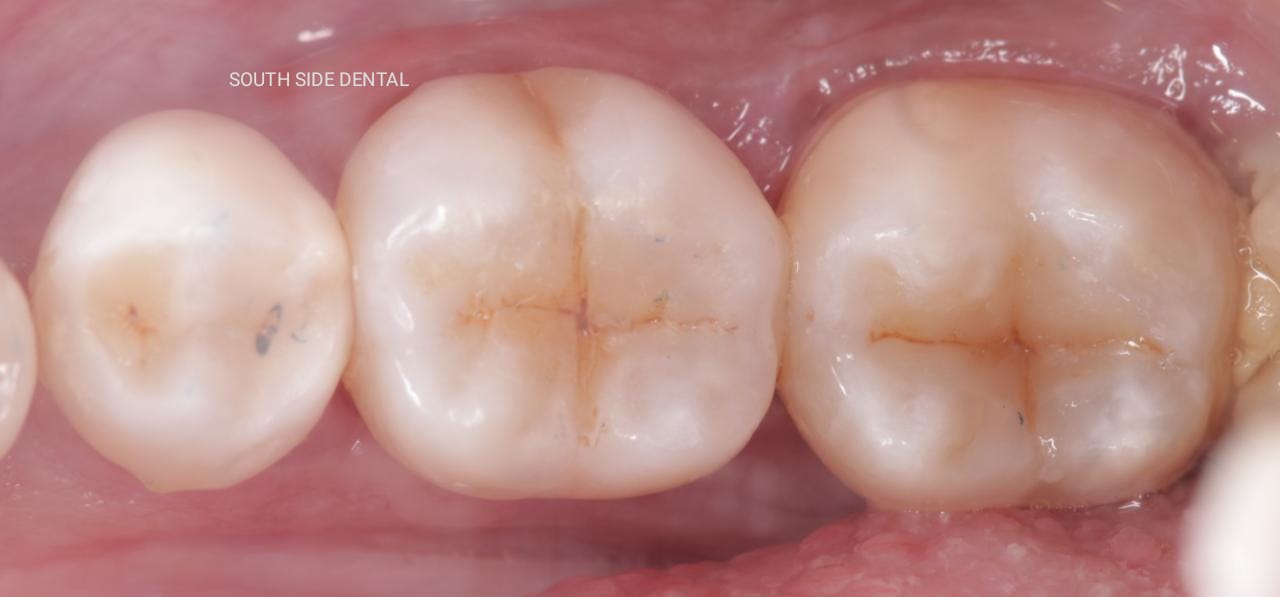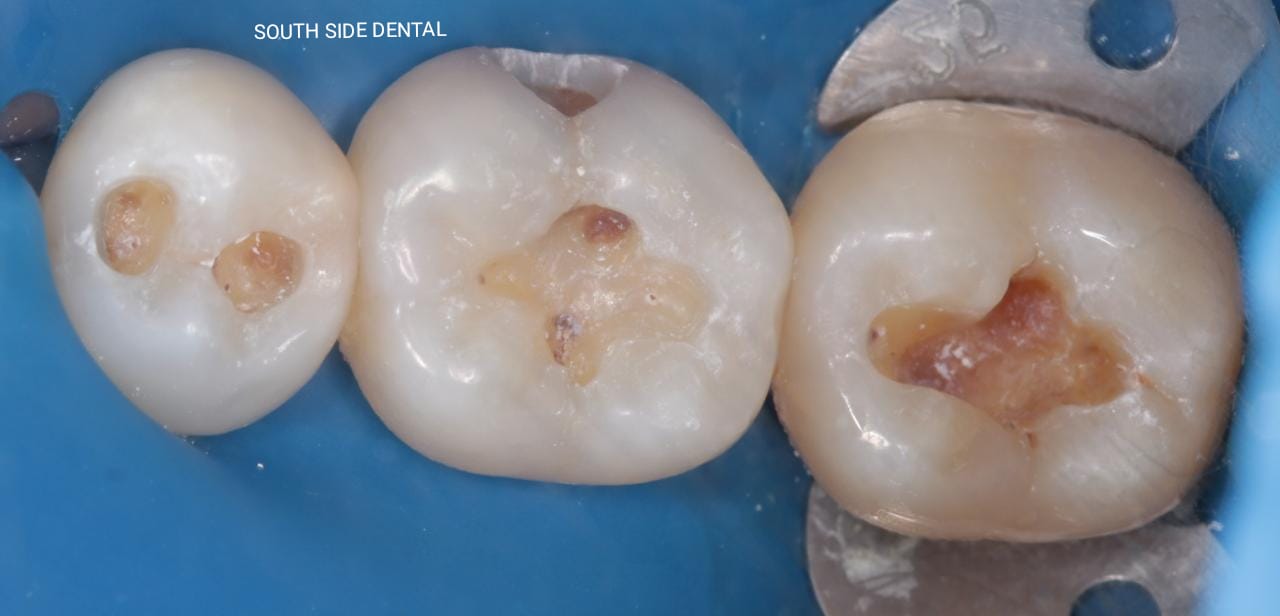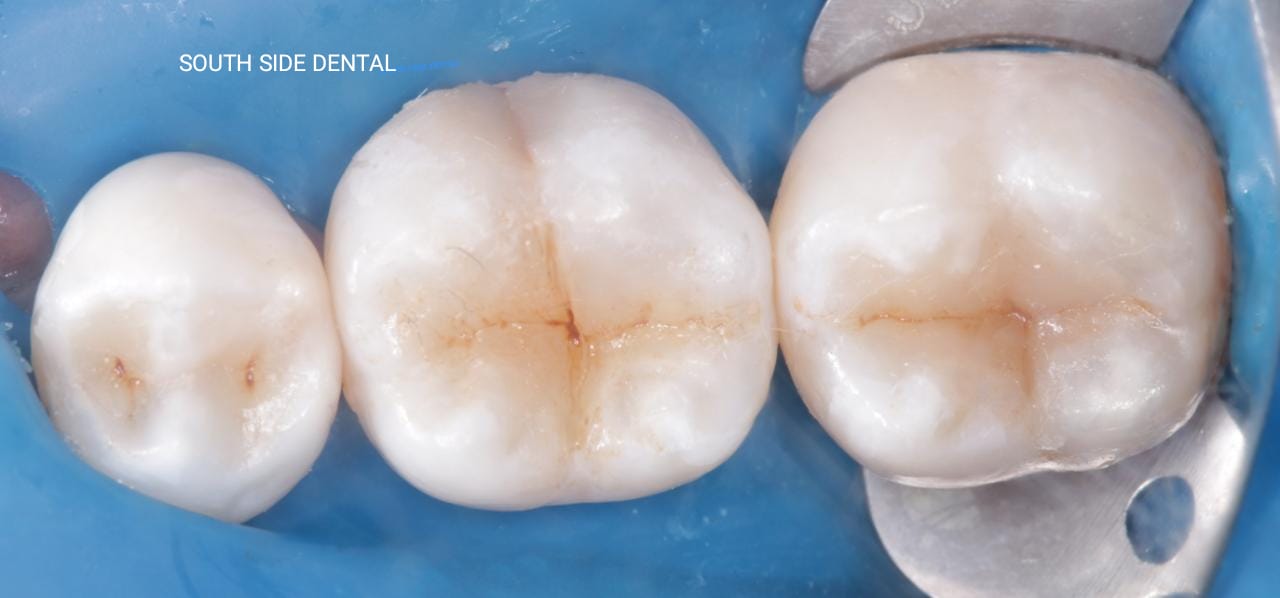Cosmetic fillings
What are Cosmetic / tooth coloured Dental Fillings?
These are a type of dental fillings that are used to treat tooth decay and to restore a damaged tooth. These are tooth-coloured or white in colour closely matching the natural tooth colour in both colour and appearance. They are also called Composite fillings or White fillings or Tooth Coloured Fillings.
Cosmetic Fillings can blend with the patient’s teeth seamlessly. This makes it a good choice to be used for changing the size, colour, or shape of the teeth. They can also help close the gaps between teeth, repair chipped teeth or make the teeth appear straighter and evener. In some cases, they are also used to replace the old silver amalgam fillings.
The earlier option of silver amalgam filling had the health issue of including mercury. This type of filling is inserted into the patient’s tooth directly and set hard by using a curing light of a certain wavelength. This is an immediate or direct form of treatment and is ideal for people with a small amount of decay. Its white appearance and its close resemblance to the natural teeth make it a preferred choice for Cosmetic Dentistry.
Advantages of Cosmetic Dental Fillings
Cosmetic Fillings have quite a few advantages as given below:
- They are more likely to match the patient’s natural tooth colour and appearance.
- They do not need slots, grooves or pins while being placed in the patient’s healthy teeth. This is because they bond chemically to the patient’s tooth structure.
- Their bonding to the teeth restores the teeth’s strength to a great extent, and hels in normal function.
- They harden at a faster rate when exposed to a blue light of certain wavelength, in seconds, when compared to other materials.
- The patient will experience little to no pain or sensitivity at all.
However, it’s important to note that composite fillings may not be suitable for all situations. They may not be as durable as amalgam fillings, especially in high-stress areas such as the back teeth where chewing forces are greater.
Cosmetic Dental Fillings Placement Procedure. How is it done?
The placement procedure starts with the dentist removing all tooth decay that was present. If the tooth decay had spread below the tooth’s enamel layer, then the patient would need to be numbed or provided anaesthetic.
The dentist will then isolate the tooth using a rubber dam. Next, the dentist will then clean the tooth and apply a primer to the area that is being restored. This is done to open the pores in the enamel and dentin. The dentist will then apply a bonding agent and cure it so that it can stick to the cosmetic filling material.



The dentist will then place the cosmetic filling material inside the tooth and shape it to resemble the natural tooth of the patient. Then a strong curing light is used to harden it. As the filling hardens, the dentist will then check the patient’s bite to ensure the teeth fits together properly. Some adjustments might be necessary for a perfect fit. The new filling will then be smoothened and polished to give it a clean, white look that will match the natural teeth.
Dos and don’t after composite fillings
After getting composite fillings, there are some dos and don’ts to keep in mind to ensure proper healing and longevity of the fillings. Here are some guidelines to follow:
Dos:
- Maintain good oral hygiene: Brush your teeth at least twice a day and floss daily to keep your teeth and gums clean. Use a soft-bristled toothbrush and non-abrasive toothpaste to avoid damaging the filling material.
- Be gentle when chewing: Avoid biting down on hard or sticky foods immediately after getting the composite fillings. Gradually reintroduce harder foods into your diet as you feel comfortable, but be mindful not to put excessive pressure on the filled tooth.
- Give it time to set: Composite fillings harden and set fully after the dental appointment, but they may take some time to reach their maximum strength. Be cautious and avoid biting down on hard objects or using the filled tooth as a tool immediately after the procedure.
- Schedule regular dental check-ups: Visit your dentist for regular check-ups and professional cleanings. Your dentist can monitor the condition of your fillings and address any concerns or issues that may arise.
- Address any discomfort or sensitivity: It is common to experience some sensitivity to hot or cold substances after getting composite fillings. However, if the sensitivity persists or if you experience any pain or discomfort, contact us to have the filling evaluated.
Don’ts:
- Avoid consuming staining substances: For the first 24 to 48 hours after the procedure, it is advisable to avoid consuming highly pigmented substances like coffee, tea, red wine, or tobacco, as they can potentially stain the composite filling material.
- Don’t chew on hard objects: Refrain from chewing on hard objects like ice, pens, or fingernails, as this can potentially damage the composite filling or the surrounding tooth structure.
- Avoid abrasive toothpaste or whitening products: Use non-abrasive toothpaste and avoid harsh whitening products that can erode the composite material and cause it to lose its natural appearance.
- Don’t skip regular dental visits: Even if your composite fillings seem fine, it’s essential to maintain regular dental visits for check-ups and professional cleanings to detect any issues early on and ensure the overall health of your teeth and fillings.
Remember, these guidelines are general recommendations. Always follow the specific instructions and advice provided by your dentist, as they may vary based on your individual situation and the specific characteristics of your fillings
Authored by
DR.NIRANJAN P



